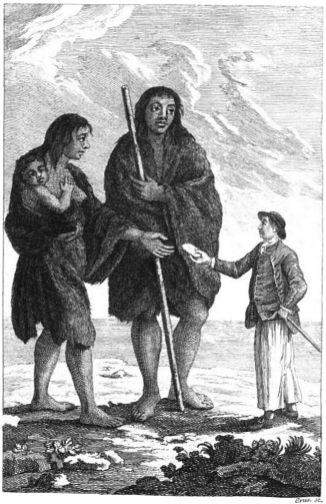This is another interesting idea that is quite original which I personally have thought about years ago. This method appears to give a person only a few extra (2-4) centimeters, but there seems to be a market for it at least in certain countries. I once stated that I am willing to look at any technique, method, or idea that is out there but I will try to make an assessment of the feasibility and possible effectiveness of the method to see if it work. I found out about the idea originally from the Make Me Taller boards. You can find the complete discussion and posts about this new method to add a few centimeters HERE.
The original website it was found from can be reach by clicking HERE but the content is in spanish so a translator was used to translate the article, which happens to be really short.
A dream of many men and women is to be higher, but sometimes it becomes necessary to access a job, which calls for a minimum size. Is solved because Macrolane is injected in the heel that is long lasting between 12-18 months, or permanently with Bioalcamid Both are made in the same way, with a local anesthetic injection and the injection of the prosthesis, depending on the we can increase number of 2-4cm and dysmetria up to 6 cm. Sometimes must be made several times to gradually increase the thickness of the heel to “grow. ” In about 30 minutes the session is done and we should not get rest.
No note or to touch or stuck walking prosthesis that heel pad
The price depends on the prosthesis wear. If using Macrolane the price is 1000 € the session by standing in the case of Bioalcamid € 1200 per session and foot. The session can reach 2 cm more in height. For a 2 nd or subsequent session must wait 3-4 weeks and by increasing the pad height increases up to 6 cm.
———————————————
This substance was discovered in the early 30’s by Karl Meyer and his colleague John Palmer, two German pharmacists. Used primarily in the field of cosmetic surgery but also has therapeutic uses in treating physical problems such as osteoarthritis of the knee.Cosmetic surgery doctors say that aesthetics and design of the body are very personal and they only help people to feel comfortable with himself, and this is achieved, among other techniques due to hyaluronic acid.These latest generation implants used in breast, buttocks and feet are the safest. A woman tells how she put on a hyaluronic acid implant in their heels to wear high heels without getting sore feet. It is just one example of the many applications of this new trend of cosmetic surgery.
Me: What seems to be mainly talked about on the boards is whether the implants is truly permanent or only temporary. One of the moderators of the board adds
It looks perfect for cases of flat feet, dysmetria of legs, if just need only 2-3 cm for get job (police, military, pilots y etc) and in some specials cases. but I don´t see it very well for LL. I have a few doubts. I just follow to logic.1. When women wear heels (even only few hours at day) that influences musculoskeletal system and causes pain of muscle, back, hips, ankles and etc. The resulting additional load to the all body.Lengthening of tibias not change position of joints and generally does not bring any changes that may seriously affect the whole body. So I guess that before make this type of treatment would be better to consult it with orthopedists.2.if you put silicon for get 4-5cm high, what kind of shoes can be used? (I see this question silly but this problem may appear in future)Also would be interesting to know about Contraindications. Im trying to find more information about this method or posts of people who already made. But for now don’t see nothing.
Me: For the contact information for the clinic if you are interested, it is below
The treatment can be completed with two different types of material: Macrolane (12 to 18 months)
Macrolane™ is a safe and highly effective treatment that uses gel containing biodegradable hyaluronic acid that occurs naturally in the body to fill out your skin and lubricate joints, giving extra volume and support where you need it.It has been used most often for breast augmentation, where it helps to swell the tissue in the breast to increase the size. 100ml of Macrolane will provide an increase of one cup size. The maximum that can be used in breast enhancement is 150ml.
Because it is biodegradable, it is slowly absorbed back into the body.
Bio-Alcamid (permanent)
Bio-Alcamid is an injected endoprosthesis (internal body extension) almost completely of water (97%) and which is considered generally safe for internal usage.
Once the implant has been injected it has almost exactly the same consistency as the surrounding tissue without producing unpleasant visual or tactile effects or seeming artificial. Within a short time of being established in the body, a thin layer of tissue forms around it and insulates it from the rest of the body, making it a permanent addition, and something that can then be easily removed.
So, it is, potentially, possible to have a modest height increase (approximately 2cm) through the introduction of one of these materials into the soles of the feet.
I considered this myself a few years ago, but only temporary enhancement was possible. The introduction of Bio-Alcamid means that it may be possible to permanently give one’s height a little boost.
It could cost about $8000 for 2cm increase if done in the UK, so it is not great value for money compared to LL and it may look and feel odd, but definitely worth some investigation – I think that I’ll go and get some in a few weeks and will report back to everyone!
The other most informative posts I found on this subject were these:
www.doctorabarba.com
consulta@doctorabarba.com Madrid
Orense 29, 2ºA, Esc.Dcha
TLF: 91 556 80 79 Zaragoza
Gran vía 24, 1ºA
TLF: 97 621 36 66
Me: Besides this clinic, here are actually a lot of medical clinic who do a similar surgical procedure to add some extra “heel’ to their patients. There have been even clinics that offer to the women a way to put high heel implants so that they can add the height with the heel without ever needing to take the extra height away. (Resource 1, Resource 2)
With every one of these types of post I do where I talk about another method or idea scientists or innovators come up to increase the human body’s length, I feel that I have to give some type of final message and thoughts on the method. With this idea of putting implants in one’s feet to gain say up to 1 extra inch in height, I would have to say that most people who consider it are either doing it because they are trying to just get to some height requirement for professional reasons often because the job description requires it. If one is seriously considering it for themselves for cosmetic reasons, I would suggest to not go through with it. Most people who are dissatisfied with their height often want large changes like 4,6 or even 1 foot of extra height. For someone to decide to go under the knife just to get a foreign synthetic chemical substance injected just below their skin so that they can look 2-3 centimeters just seems very excessive and might I used the word “crazy” for me. those type of people have other issues or personal eccentricities that they should probably deal with first before deciding to increase their height.
Maybe it is just something I don’t understand and someone else might want to go through with it. We each have our own lives to live and we make the choice we think are the best for us. I try to provide the most legitimate, and honest resources and techniques I have found to you and you are the person who has to decide what to do with it.






